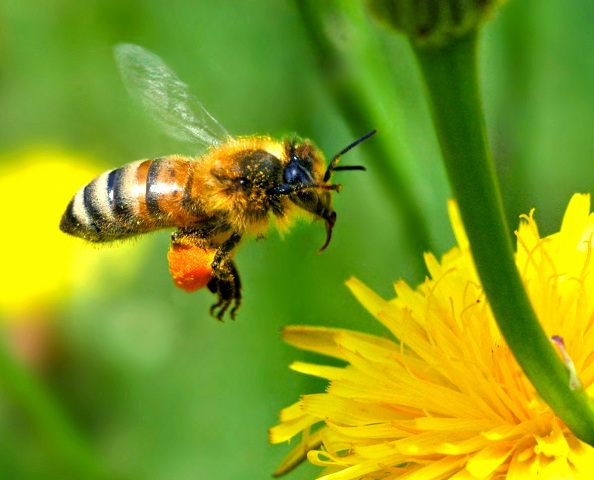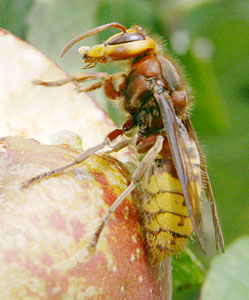Wasps - The common wasp (vespula vulgaris L)
Identification : 10mm - 20mm, narrow waist, distinctive banding in bright yellow and black. Two pairs of membraneous wings.
Breeding: Queen emerges from hibernation in mid April, constructs 10 - 20 chambers and lays eggs in each one, sterile female workers hatch by late summer the colony reaches 3000 - 30000 individuals. Males and new queens are produced in late summer, males mate with new queen and then die. The queen wasps in turn fly off to find an over winter hibernation site, usually inside a building or hollow tree.
Control: Locating nests onsite and carrying out a treatment with a powder insecticide, which is pumped in and around the nest itself, which will destroy the wasps within 24 hours. This treatment is guaranteed.
Bees
Identification : A four-winged insect that collects nectar to make honey and wax.. Please note that bees have a high ecological value and will only be treated when there is risk to children or animals in there vinicity or if someone is known to have an allergic reaction to there stings!
Control: Locating nests onsite and carrying out a treatment with a powder insecticide, which is pumped in and around the nest itself, which will destroy the bees within 24 hours.
Hornets
Identification : Hornets are the largest eusocial wasps, reaching up to 45 millimetres (1.8 inches) in length. The true hornets make up the genus Vespa, and are distinguished from other vespines by the width of the vertex (part of the head behind the eyes), which is proportionally larger in Vespa; and by the anteriorly rounded gasters (the section of the abdomen behind the wasp waist).
Control: Locating nests onsite and carrying out a treatment with a powder insecticide, which is pumped in and around the nest itself, which will destroy the Hornets within 24 hours.
Wasps, Bees and Hornets
Wasp nest in a loft space.
This is a queen wasp that was flying in a loft on
16/4/08 a sure sign that wasps are starting to get active!!!
<------------1metre-------------->



